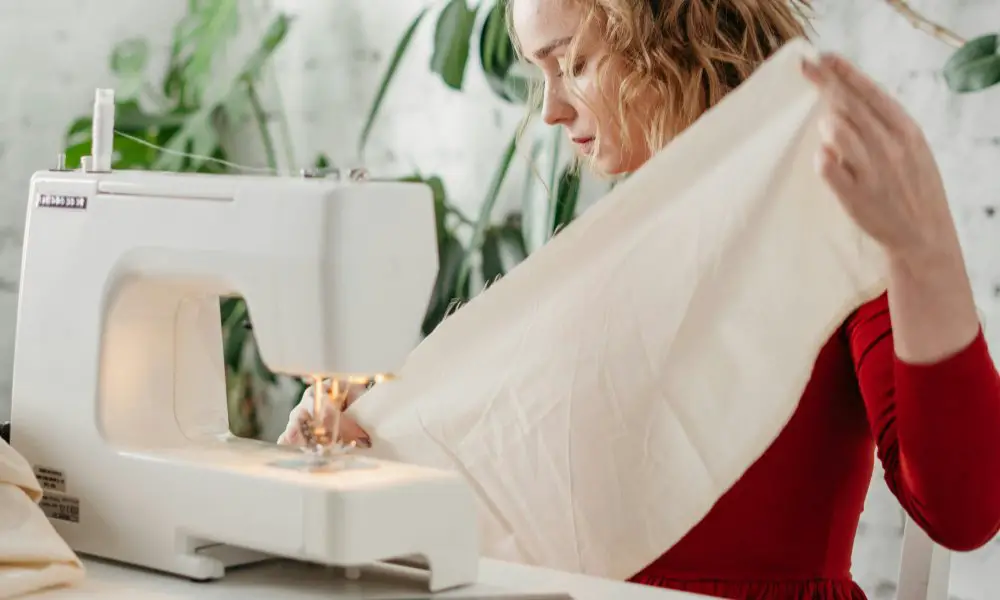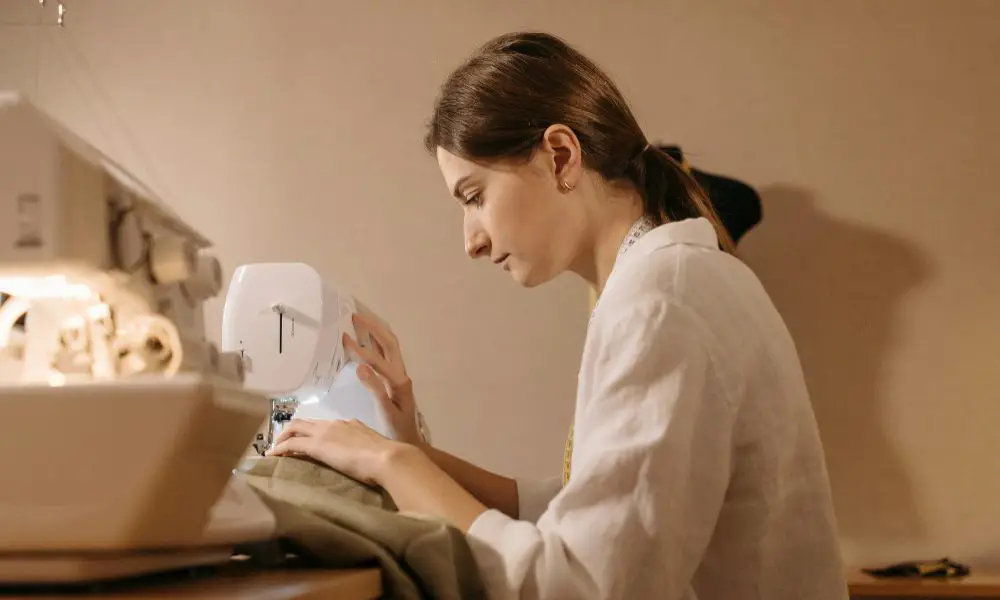Have you ever found yourself staring at a sewing pattern, feeling a sense of trepidation regarding the sleeve section? Sleeve sewing can be a challenging job, but with proper methods and some perseverance, it can become effortless. Whether you’re a seasoned seamstress or a budding sewing enthusiast, mastering the art of sleeve construction is a game-changer that will elevate your garment-making skills.
The Importance of Well-Fitted Sleeves
Well-fitted sleeves are not just a cosmetic detail but are crucial in enhancing a garment’s overall appearance and wearability. Properly constructed sleeves drape beautifully, allowing uninhibited movement and ensuring a comfortable fit. From structured blazers to flowy dresses, well-sewn sleeves can transform a mediocre garment into a masterpiece you’ll love wearing time and time again.
Understanding Sleeve Types
Before diving into the intricacies of sleeve construction, you must familiarize yourself with the different sleeve types. To achieve a polished and professional look, it’s crucial to understand the nuanced distinctions between each style. You must also have a unique approach and technique for each style.
- Set-in sleeves: The sleeves sewn into the bodice’s armhole are called set-in sleeves. This type of sleeve provides a smooth and tailored appearance. They are commonly found in structured garments like blazers and dresses, and mastering their construction is a rite of passage for any serious sewer.
- Raglan sleeves: Characterized by diagonal seams extending from the neckline to the underarm, raglan sleeves offer a comfortable, relaxed fit and are often seen in casual and athletic apparel. Their unique construction allows for ample movement and a flattering silhouette.
- Kimono sleeves: These sleeves are cut as an extension of the bodice, creating a seamless transition from the shoulder to the sleeve. Loose and flowy garments often feature kimono sleeves, which can be either short or long. They bring a sense of grace and comfort to any outfit.
- Cap sleeves: As the name suggests, cap sleeves are short and fitted, covering just the shoulder area. They are a popular choice for summer dresses and tops, providing just the right coverage while keeping you cool and stylish.
Preparing the Fabric
Before you can tackle the sleeves, preparing your fabric correctly is crucial. Start by prewashing and ironing the fabric to ensure it’s pristine and wrinkle-free. Then, carefully transfer any pattern markings, such as notches and seam lines, onto the fabric using the tailor’s chalk or tracing paper. This step is essential for ensuring accurate sleeve construction and a perfect fit.
Next, cut out the sleeve pieces precisely, following the pattern instructions and adding seam allowances as needed. Pay close attention to the grainline and any unique markings on the pattern to ensure your sleeves hang and drape correctly.
Attaching Set-in Sleeves

Set-in sleeves are often considered the most challenging to sew, but with the proper techniques, they can be conquered like a true sewing warrior. Here’s how:
- Easing the sleeve cap: The sleeve cap, or the curved upper portion of the sleeve, needs to be slightly gathered to fit into the armhole. Gently ease the fabric by distributing the excess fabric evenly along the curve, using a basting stitch or careful pinning to hold the gathers in place.
- Matching notches and underarm seams: Align the notches on the sleeve cap with the corresponding notches on the armhole. Match the underarm seams of the sleeve and bodice, ensuring they line up perfectly. Achieving a smooth, seamless transition between the sleeve and bodice requires careful attention to this step. It is a crucial step that should not be overlooked.
- Stitching the sleeve cap: Using a slightly longer stitch length and a stretch or zigzag stitch, sew the sleeve cap to the armhole, easing the excess fabric. Take your time and adjust the gathers as needed to ensure a perfect fit.
- Finishing the armhole seam: Once the sleeve is attached, finish the armhole seam by trimming any excess fabric and pressing the seam allowances towards the bodice. This step will give your garment a polished, professional look.
Constructing Raglan Sleeves
Raglan sleeves offer a comfortable fit and a unique construction process. Here’s how to sew them like a pro:
- Joining the raglan seams: Start by sewing the raglan seams, which extend from the neckline to the underarm area. Ensure the seams are matched and pressed towards the back of the garment for a neat, flat appearance.
- Attaching the underarm seams: With the raglan seams joined, sew the underarm seams of the sleeve and bodice together, matching the notches and seam lines. This step will create a seamless transition between the sleeve and bodice.
- Finishing the sleeves: Depending on the pattern instructions, you may need to finish the sleeve hems or cuffs. Press the seams towards the sleeve for a polished look, and consider using a sleeve board or tailor’s ham to ensure a crisp, professional finish.
Creating Kimono and Cap Sleeves
Kimono and cap sleeves offer a different construction method, often requiring less intricate techniques than their set-in or raglan counterparts.
- Sewing kimono sleeves: Kimono sleeves are sewn as an extension of the bodice, so you’ll simply need to sew the side seams and sleeve hems according to the pattern instructions. This construction method creates a fluid, flowing, elegant, and comfortable sleeve.
- Constructing cap sleeves: Cap sleeves are typically sewn into the armhole, similar to set-in sleeves but with a shorter cap. Follow the same techniques for easing and matching notches to ensure a smooth, seamless fit.
- Finishing techniques: Depending on the style, you may need to finish the sleeve hems with a narrow hem or binding. Press the seams for a crisp, professional look, and consider using a sleeve board to ensure a flawless finish.
Tips and Tricks
To ensure your sleeves look their best and fit like a dream, keep these tips and tricks in mind:
Stabilizing the fabric: For lightweight or stretchy fabrics, consider using a stabilizer or stay tape along the sleeve cap to prevent distortion and ensure a smooth fit.
- Adding this additional step can significantly impact the final visual appeal of your clothing.
- Adjusting sleeve caps: If the sleeve cap seems too tight or loose, make minor adjustments by slightly easing or gathering the fabric before stitching. A well-fitted sleeve cap is critical to a comfortable and flattering garment.
- Pressing for professional results: Proper pressing is critical to achieving a professional look. Use a tailor’s ham or sleeve board to push the curved areas of the sleeves, ensuring a crisp, wrinkle-free finish.
- Experimenting with sleeve styles: Don’t be afraid to experiment with different sleeve styles and techniques. From puff sleeves to flutter sleeves, the possibilities are endless. Embrace your creativity and have fun with your sewing projects!
FAQs
What is the best way to sew sleeves on knit fabrics?
When sewing sleeves on knit fabrics, it’s essential to use a stretch or zigzag stitch to allow for the fabric’s natural stretch. If you want to prevent the fabric from stretching or bunching during sewing, using a walking foot or activating the fabric feed dogs on your sewing machine might be helpful.
How do I determine the right amount of ease for a sleeve cap?
The amount of ease needed for a sleeve cap will depend on the pattern instructions and the desired fit. Generally, you’ll want to distribute the excess fabric evenly along the sleeve cap curve to ensure a smooth fit. Refer to the pattern’s easy measurements or consult a sewing reference book for guidance.
Can I sew sleeves on a garment without a designated armhole?
It’s possible to sew sleeves on a garment without a designated armhole, such as a kimono-style dress or top. In this case, carefully measure and mark the armhole opening on the bodice piece before attaching the sleeves.
How do I finish the sleeve hem?
There are several ways to finish a sleeve hem, including using a narrow hem, bias binding, or a cuff. The fabric type, sleeve style, and personal preference are all factors to consider when deciding on a method, and they will influence your choice. You can refer to your pattern instructions or seek advice from a sewing reference for detailed guidance on each step.
Can I adjust the sleeve length after sewing?
Yes, it’s possible to adjust the sleeve length after sewing, but it’s generally easier to make adjustments before attaching the sleeves. If you need to shorten or lengthen the sleeves after sewn, carefully unpick the hem or cuff and adjust the length before re-hemming.
Conclusion
Sewing sleeves may seem daunting initially, but with practice and the proper techniques, it can become a rewarding and satisfying process. Well-fitted sleeves enhance the appearance of your garments and contribute to their overall comfort and wearability. So, embrace the challenge, experiment with different sleeve types, and revel in the joy of creating beautiful, well-constructed garments that you’ll be proud to wear.
Question for the Audience
Now that you’ve learned about sewing sleeves, what sleeve type do you find most challenging, and why? Feel free to express your experiences and opinions in the comments below! If this article was beneficial to you, please subscribe to our newsletter for additional sewing advice, designs, and motivation.
***
Main image: pexels




